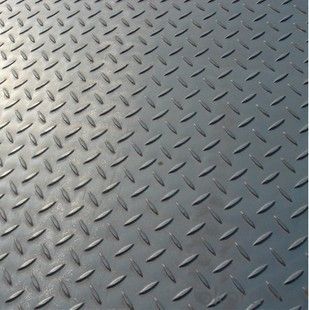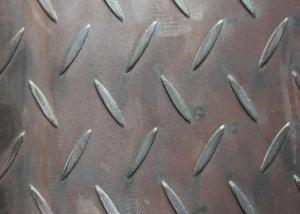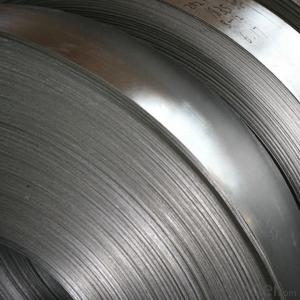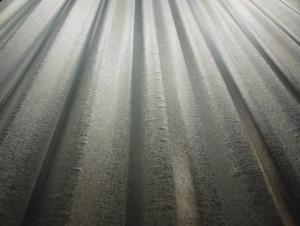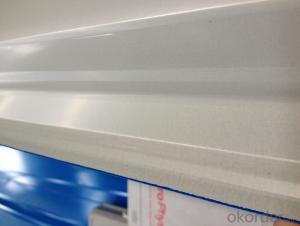Steel Plate Hot Rolled in Good Quality HR
- Loading Port:
- Tianjin
- Payment Terms:
- TT OR LC
- Min Order Qty:
- 500 m.t.
- Supply Capability:
- 6000 m.t./month
OKorder Service Pledge
OKorder Financial Service
You Might Also Like
Specification
1. Product Description
Steel plate is to use steel casting, cooling and then suppress the flat shape of steel.
Steel plate is flat shape, rectangular, directly or by the width of rolling steel strip shear.
Thin plate steel plate according to the thickness of the points, < 4 mm (0.2 mm) the most thin, thick steel plate 4 ~ 60 mm, thick steel plate 60 ~ 115 mm.
Steel plate by rolling, hot rolling and cold rolling.
The width of the sheet is 500 ~ 1500 mm;Width is 600 ~ 3000 mm thick.Divide sheet according to the grade of steel, ordinary steel, high-quality steel, alloy steel, spring steel, stainless steel, tool steel, heat-resistant steel, bearing steel, silicon steel and industrial pure iron sheet, etc.;According to professional use points, oil drums with boards, enamel using plate, bulletproof plate, etc.;Points on the surface coatings, galvanized sheet, tin plate, lead plate, plastic plating composite steel plate, etc.
2. Main Features
Alloy elements of quenching and tempering condition steel reinforcement is the most significant, because it makes full use of all the four kinds of reinforcement mechanism.Carbide precipitation when martensite formed when quenching, tempering, causing strong second phase strengthening, and greatly improve the toughness, so get martensite and its tempering steel is the most economic and effective comprehensive reinforcement method.
Alloying elements in steel, the primary purpose is to improve the hardenability of steel, to ensure easy access to martensite during quenching.Second is to improve the tempering stability of steel, to keep the martensite to higher temperature, the quenching steel precipitation of carbides during tempering is more fine, uniform and stable.So, under the same conditions, the strength of the carbon steel is higher than that in alloy steel.
3. Excellent Product Image

4. Application
1, the structure of the steel
General production structure with steel and welded steel structure, mainly used in steel structures, Bridges, ships, the production of vehicles.
2, weathering steel
Add special elements (P, Cu, C, etc.), has good corrosion resistance and atmospheric corrosion resistance, is used in the production of the container, special vehicle, also used for building structures.
Three, automobile structure steel
Has a good DRAWING performance and weldability of high strength steel plate, used in production of automobile FRAME, WHEEL, etc.
4, hot rolled steel
General mechanical structure with carbon steel, alloy steel, tool steel, after heat treatment engineering used in the production of various kinds of machinery parts and components.
5. FAQ
1.Q: Do you have attended any exhibition?
A: We almost go to Canton Fair and Overseas Exhibitions every year.
2. Q: How to guarantee the quality of the products?
A: We have established the international advanced quality management system,every link from raw material to final product we have strict quality test;We resolutely put an end to unqualified products flowing into the market. At the same time, we will provide necessary follow-up service assurance.
3. Q: How long can we receive the product after purchase?
A: Usually within thirty working days after receiving buyer’s advance payment or LC. We will arrange the factory manufacturing as soon as possible. The cargo readiness usually takes 15-25 days, but the shipment will depend on the vessel situation.
Why choose us?
Pre-sale Service
1. Sample can be offered with sample charge and courier fee by buyer's side.
2. We have full stock,and can deliver within short time.Many styles for your choices.
3. OEM and ODM order are accepted, Any kind of logo printing or design are available.
4. Good Quality + Factory Price + Quick Response + Reliable Service, is what we are trying best to offer you
5. All of our products are produce by our professional workman and we have our high-work-effect foreign trust-worthy sales team.
6. We have 18 years' experience of design, manufacture and sell lingerie, we cherish every order from our honor.
After you choose
1. Count the most efficient shipping cost and make invoice to you at once.
2. Check quality again, then send out to you at 1-2 working day after your payment.
3. Email you the tracking no, and help to chase the parcels until it arrive you.
- Q: What is the average fire rating for steel sheets?
- The average fire rating for steel sheets can vary depending on the specific type and thickness of the steel, as well as any additional fireproofing measures applied. However, in general, steel sheets typically have a fire rating of around 30 to 60 minutes.
- Q: What is the maximum length of a steel sheet?
- The maximum length of a steel sheet can vary depending on various factors such as the manufacturing capabilities of the steel mill, transportation limitations, and customer requirements. However, in general, steel sheets can be produced in lengths ranging from a few feet to several hundred feet. Industrial-sized steel mills are capable of producing exceptionally long steel sheets, often exceeding 100 feet or more. These extended lengths are typically utilized in large-scale construction projects, such as bridges, industrial buildings, or shipbuilding. However, it is essential to note that the maximum length of a steel sheet is subject to practical constraints, such as the size of transportation vehicles or the limitations of handling equipment. Therefore, while it is possible to manufacture steel sheets of considerable length, practical considerations may restrict the maximum length that can be effectively utilized in different applications.
- Q: Can steel sheets be customized in terms of thickness?
- Indeed, thickness customization is possible for steel sheets. Steel sheets are produced in a variety of thicknesses to accommodate diverse applications and demands. The manufacturing process allows for the customization of a steel sheet's thickness based on the customer's specific requirements. This customization feature provides versatility and adaptability, enabling steel sheets to be utilized across a broad spectrum of industries such as construction, automotive, manufacturing, and fabrication. By tailoring the thickness of steel sheets, they can effectively fulfill the precise needs for strength, durability, and structural integrity in any given project.
- Q: What are the different sheet metal rolling techniques for steel sheets?
- There are several sheet metal rolling techniques that are commonly used for steel sheets. These techniques include hot rolling, cold rolling, and roll forming. Hot rolling is a process in which steel sheets are heated above their recrystallization temperature and then passed through a series of rollers to reduce their thickness. This technique is commonly used to produce steel sheets with a consistent and uniform thickness. The hot rolling process also improves the mechanical properties of the steel, making it stronger and more ductile. Cold rolling, on the other hand, is a technique in which steel sheets are passed through rollers at room temperature. This process is used to produce thinner and smoother steel sheets with a higher degree of dimensional accuracy. Cold-rolled steel sheets are often used in applications that require a high-quality surface finish, such as automotive body panels and appliances. Roll forming is a continuous bending process in which a long strip of steel is passed through a series of rollers to gradually shape it into a desired profile. This technique is commonly used to produce steel sheets with complex shapes and profiles, such as corrugated roofing sheets or C-channel beams. Roll forming offers excellent precision and repeatability, making it a popular choice for producing large quantities of steel sheets with consistent dimensions. Overall, the choice of sheet metal rolling technique depends on the specific requirements of the application. Hot rolling is ideal for producing steel sheets with a uniform thickness and improved mechanical properties. Cold rolling is preferred for applications that require a high-quality surface finish and dimensional accuracy. Roll forming is suitable for creating steel sheets with complex shapes and profiles.
- Q: What is the difference between a smooth and corrugated stainless steel sheet?
- A smooth stainless steel sheet has a flat and polished surface, while a corrugated stainless steel sheet has a wavy pattern or ridges on its surface. The corrugations provide added strength and rigidity to the sheet, making it suitable for applications where increased durability and resistance to bending or warping are required. The smooth sheet, on the other hand, is often chosen for its aesthetic appeal and can be easily cleaned and maintained.
- Q: Can Q460C steel plate be used as Q235 steel plate?
- Q460C steel plate is superior to Q235 steel in mechanical performance, but Q235 steel plate has lower cost. Therefore, the steel sheet of Q460C material can be used as a Q235 steel plate without considering the cost.
- Q: Are steel sheets suitable for manufacturing elevator doors?
- Yes, steel sheets are suitable for manufacturing elevator doors. Steel is a popular choice for elevator doors due to its strength, durability, and aesthetic appeal. Steel sheets offer the necessary strength and rigidity required for elevator doors, ensuring safety and security. Additionally, steel is resistant to wear and tear, corrosion, and fire, making it a reliable material for elevator doors. Steel sheets can also be easily customized and finished to meet various design requirements, allowing for a wide range of styles and finishes. Overall, steel sheets provide the necessary qualities for manufacturing elevator doors, making them a suitable choice for this application.
- Q: Can steel sheets be used for electrical switchgear?
- Yes, steel sheets can be used for electrical switchgear. Steel is a common material used in the construction of switchgear cabinets due to its durability, strength, and ability to protect the electrical components inside from external factors such as moisture, dust, and physical damage. Additionally, steel provides grounding properties necessary for electrical safety.
- Q: STCC what's the quality of the cold rolled steel sheet?
- Cold rolled steel: rolled without heating at room temperature (strictly speaking below the recrystallization temperature).
- Q: What's the corrosion resistance of hot-dip galvanized steel sheet?
- The corrosion resistance of galvanized steel sheet in natural environment is acceptable. The biochemical pond in the sewage treatment plant is strong in acidity, and the zinc is not acid resistant. It is very different from the galvanized sheet with the uncoated steel sheet.
Send your message to us
Steel Plate Hot Rolled in Good Quality HR
- Loading Port:
- Tianjin
- Payment Terms:
- TT OR LC
- Min Order Qty:
- 500 m.t.
- Supply Capability:
- 6000 m.t./month
OKorder Service Pledge
OKorder Financial Service
Similar products
Hot products
Hot Searches
Related keywords







